Top 15 Web Design Trends In 2024 That You Must Know About
4 mins | 09 Aug 2023
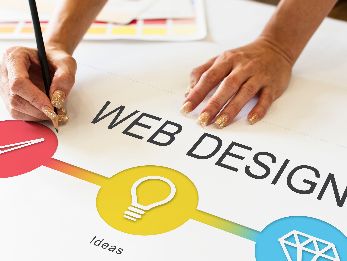
Table of Contents
2. Top Web Design Trends In 2024
Introduction
Are you curious about the secret to creating websites that make people go "Wow"? Well, get ready to read about web design trends for 2024. Are you prepared to take your website to the next level and stand out online?
In today's fast-paced world, staying ahead is super important. As technology changes, so do what people expect from websites. Are you keeping up with the latest design trends that can make your website modern, user-friendly, and beautiful?
“I strive for two things in design: simplicity and clarity. Great design is born of those two things.” — Leonardo Da Vinci
Our mission in this blog is simple - to be your ultimate guide to the new and popular web design trends for 2024. We'll cover everything from cool animations to easy-to-use interfaces and more. So, are you excited to explore the future of web design and make your website shine? Let's learn and have some fun along the way!
Here’s The List Of Top 15 Web Design Trends To Look For In 2024
2. Minimalism And Simplified UI
3. 3D Graphics and Illustrations
4. Augmented Reality (AR) and Virtual Reality (VR) Integration
5. Customizable and Interactive User Interfaces
6. Voice User Interface (VUI) and Chatbots
7. Gradient and Duotone Color Schemes
9. Accessibility and Inclusivity
10. Motion Effects
11. Glass Morphism
12. AI in Web design
13. Retro Designs
14. Skeuomorphism
1. Dark Mode And Light Mode
In the vibrant world of web design, Dark Mode and Light Mode are stealing the spotlight like never before. Let's explore the rising popularity of these contrasting designs and how they cater to different user preferences, offering the best of both worlds.
- The Allure of Dark and Light Modes: Dark Mode and Light Mode designs are taking center stage in web interfaces. Dark Mode with its sleek and mysterious appearance, reduces eye strain and saves battery life on OLED screens. On the other hand, Light Modes' crisp and clean look evokes a sense of familiarity and ease of readability.
- Catering To User Preferences: Dark Mode is adored by night owls and those who prefer a touch of sophistication. Its reduced glare and contrast enhance visual comfort in low-light environments. Light Mode, beloved by traditionalists, ensures legibility and familiarity. Users can easily switch between modes to suit their surroundings and preferences, creating a personalized browsing experience.
- Websites Mastering Both Modes: Leading websites are embracing the best of both worlds, offering users the freedom to choose between Dark Mode and Light Mode. Social media platforms like Twitter and Facebook seamlessly adapt to user preferences, while content-rich websites like The New York Times provide a reading experience tailored to users' eyes.
As we move forward, we expect more websites to embrace this trend, ensuring a delightful browsing experience for users day and night. So, why not give it a try? Switch to your preferred mode and experience the magic of Dark Mode and Light Mode designs yourself!
2. Minimalism And Simplified UI
Minimalism continues to reign supreme, transforming how users interact with digital interfaces. Let's unravel the allure of minimalistic web design and how its simplicity enhances user experience like never before.
- The Timeless Allure of Minimalism: Minimalism's enduring popularity stems from its ability to captivate users with less clutter and more focus on what truly matters. Embracing simplicity, minimalistic web design delights users with a clean and uncluttered visual experience. By removing distractions and excess elements, users can easily navigate, absorb information, and interact seamlessly.
- The Power of Whitespace and Simple Navigation: Whitespace, the blank space between elements, plays a pivotal role in minimalist designs. It enhances visual hierarchy and content legibility, providing a calming and elegant browsing experience. Simple navigation empowers users to find what they need effortlessly, reducing frustration and boosting engagement.
- Websites Embracing Minimalist and Simplified UI: Leading brands and businesses are embracing the magic of minimalist web design to leave a lasting impression on their audience. Tech giants like Apple and Google exude sophistication and user-friendliness through their decluttered and intuitive interfaces. Fashion brands like Everlane embrace minimalism to showcase their products with clarity and elegance.
As more websites embrace this timeless elegance, expect to see minimalism continue to dominate the web designing trend’s landscape, captivating users with its understated brilliance. So, why not join the minimalist revolution and elevate your website's user experience to new heights of elegance and simplicity?
3. 3D Graphics and Illustrations
3D graphics and illustrations have unlocked a new dimension in web design, captivating users with immersive experiences. Cutting-edge technologies empower designers to weave magic into their creations, unleashing the full potential of 3D. Let's understand how it is reshaping the way we interact with the digital world.
- The Rise of Immersive Web Experiences: As technology advances, the use of 3D graphics and illustrations is soaring, transforming static websites into interactive wonderlands. With 3D elements, websites come alive, engaging users with stunning visuals and seamless interactivity. From product showcases to captivating storytelling, 3D elevates web experiences to a whole new level.
- Incorporating 3D Elements Effectively: Cutting-edge technologies and tools enable designers to seamlessly integrate 3D elements into web designs. From WebGL to 3D modeling software, designers have a plethora of resources at their fingertips. These tools allow for smooth interactions, responsive animations, and realistic renderings, making the 3D experience truly enchanting.
- Websites Engaging Users with 3D Brilliance: Leading brands and businesses are embracing 3D graphics and illustrations to create memorable web experiences. From innovative product presentations on e-commerce sites to breathtaking visual storytelling on media platforms, 3D captures users' attention and holds them spellbound.
4. Augmented Reality (AR) and Virtual Reality (VR) Integration
The fusion of Augmented Reality (AR) and Virtual Reality (VR) technologies is revolutionizing the way we interact with the digital realm. Do you know how it brings interactivity and innovation to web experiences? Let’s understand.
- Exploring AR and VR in Web Design: AR and VR integration is unlocking new dimensions in web experiences, blurring the lines between the virtual and physical worlds. AR overlays digital elements onto the real environment, while VR immerses users in fully virtual landscapes. This convergence offers interactive and imaginative web experiences that engage users like never before.
- Enhancing Product Visualization and Storytelling: AR and VR have become powerful tools for product visualization, allowing users to interact with products in a lifelike manner before purchase. For storytelling, VR offers unparalleled immersion, enabling users to become part of the narrative, be it exploring a virtual museum or a thrilling adventure.
Inspiring Examples:
Leading brands are embracing AR and VR to captivate their audience and create unforgettable web experiences. From trying on virtual fashion collections to exploring 3D architectural designs, AR and VR are transforming how users engage with websites.
As AR and VR continue to evolve, expect to see more websites embracing this innovation to create web experiences that amaze and inspire.
5. Customizable and Interactive User Interfaces
Customizable and interactive user interfaces are taking center stage, revolutionizing the way users engage with digital content. Let's delve into the world of personalization and interactivity, where users become masters of their web journey.
- The Age of Personalization: Gone are the days of one-size-fits-all web experiences. The rise of customizable interfaces empowers users to tailor their browsing experience to their preferences. From choosing color schemes to arranging content blocks, users can now create a personalized web space that resonates with their style and needs.
- Interactive Elements: Bringing Web Experiences to Life: Interactive elements breathe life into websites, creating delightful and engaging experiences. Dynamic backgrounds that respond to user actions, sliders that showcase content with fluidity, and micro-interactions that add a touch of playfulness – these elements captivate users and keep them glued to the screen.
- Crafting an Effective Customizable and Interactive UI: To implement customizable and interactive UI elements effectively, start by understanding your target audience and their preferences. Offer a range of options without overwhelming users, striking a balance between personalization and simplicity. Ensure that interactive elements serve a purpose and enhance user experience, rather than being mere distractions.
6. Voice User Interface (VUI) and Chatbots
Voice User Interface (VUI) and chatbots are emerging as game-changers, transforming the way users interact with digital platforms. From voice search to conversational chatbots, these technologies bridge the gap between users and digital platforms.
- Embracing the Power of VUI and Chatbots: VUI and chatbots are making waves with their ability to converse with users, offering a more natural and conversational way of interaction. Voice search and voice commands streamline navigation and content access, making web experiences faster and more user-friendly.
- Empowering Accessibility: VUI and chatbots break barriers for users with disabilities, providing an inclusive web experience. For those with limited mobility or visual impairments, voice-based interaction opens doors to seamless navigation and content consumption.
- Making Websites Smarter and More Engaging: Leading websites are integrating VUI and chatbots to enhance user engagement. E-commerce platforms deploy chatbots for personalized shopping assistance, while customer support chatbots offer real-time solutions to queries.
7. Gradient and Duotone Color Schemes
In the ever-evolving world of web design, gradients, and duotone color schemes are making a striking comeback, infusing digital experiences with boldness and creativity. Let's see how designers can use them to add depth and visual interest.
- The Return of Gradients and Duotone Colors: Once considered relics of the past, gradients, and duotone colors are now reclaiming the spotlight in modern web design. Gradients, with their smooth transitions between hues, create a mesmerizing and dynamic backdrop, while duotone colors add contrast and vibrancy, giving websites a unique and captivating look.
- Adding Depth and Visual Interest: Gradients and duotone color schemes bring depth and dimension to flat designs, elevating them to new heights of visual appeal. Whether used as backgrounds or as vibrant overlays on images, these color schemes infuse websites with life and energy, leaving a lasting impression on visitors.
- Inspiring Showcases: Leading brands and creative agencies are embracing the magic of gradients and duotone colors to create unforgettable web experiences. From breathtaking landing pages to eye-catching illustrations, these color schemes are masterfully used to evoke emotions and captivate audiences.
8. Microcopy and Storytelling
The power of words goes beyond the obvious. Microcopy, those tiny snippets of text, and storytelling techniques are the secret ingredients that breathe life into web experiences, guiding users and captivating visitors like never before.
- The Art of Microcopy: Microcopy may be small in size, but its impact is enormous. From error messages that empathize to call-to-action buttons that inspire action, these concise words guide users through their digital journey. Thoughtful microcopy enhances usability, reduces friction, and creates a delightful user experience.
- Communicating Brand Messages with Emotion: Storytelling weaves narratives that resonate with users on a deeper level. Whether through engaging product descriptions or an about page that sparks connections, storytelling humanizes brands and fosters emotional connections. It's a journey that takes users beyond the surface and makes them part of something greater.
- Websites Mastering Microcopy and Storytelling: Leading websites infuse their interfaces with captivating microcopy and storytelling. E-commerce platforms craft compelling product narratives, while service websites use microcopy to guide users through the process seamlessly.
As web designers continue to harness the power of words, expect to see digital experiences that not only function flawlessly but also captivate hearts and minds.
9. Accessibility and Inclusivity
Accessibility and inclusivity are important principles that make sure all users can easily use the internet with respect and dignity. Let's understand why designing websites with accessibility and inclusivity in mind is crucial and explore some tips and resources to create an inclusive digital experience.
10. Motion Effects
This emerging web design trend is attaining considerable traction in the industry and is particularly favored by web designers for its ability to deliver engaging experiences for website visitors. In 2024, it is poised to secure a spot among the top ten trends, signifying a solid wave in its prevalence.
Different types of motions can be applied to the homepage of your website, which further helps contribute to enhanced interactivity. Implementing scroll-driven animations proves effective, guiding users seamlessly through various sections of the page while simultaneously highlighting the offerings of the business or service.
- Ways To Add Motion Effects: There are a few different ways also to integrate motion effects on the homepage of your website, such as moving elements, hover animation, accent animation, and loading animation. You can now effectively captivate the attention of your audience by presenting a few instances of your past projects via an attractive portfolio or compelling visual narratives.
- Few Things To Consider: When it comes to incorporating dynamic effects into a website, it is highly essential to ensure that it doesn't compromise the speed or hinder the mobile display. Moreover, try to avoid an excessive number of effects, as this might help to create visual confusion or overwhelm users. This particular approach can serve as inspiration for designing service websites and SaaS product platforms. Integrating animations on the homepage enhances the across-the-board attractiveness of the websites, making them more engaging and interactive for visitors.
11. Glass Morphism
When you visit any website, your initial focus is likely drawn toward the prominent hero image or the visual that occupies the entire space above the screen. A captivating method to make this element distinctive for your target audience is by incorporating the coming-up design trend known as — Glass Morphism.
- Glass Morphism Becoming A Dominant Trend: This specific design style involves the application of transparency to create a glass-like appearance or effect and is gaining popularity and poised to be a dominant trend in 2024. Implementing Glass Morphism in the hero section of your website can compel web visitors to pause and pay attention to the message you want to convey.
- Visually Appealing: The allure of a visually appealing image or shape often encourages web visitors to explore further details about a particular business or brand. While Glass Morphism may come across as a sophisticated trend, it streamlines the design process enormously for professionals. It is versatile enough to be seamlessly integrated into websites across various industries and perfectly aligns with the principles of minimalism.
12. AI In web design
Remember, in 2024, the spotlight was on the introduction of artificial intelligence (AI) in so many different fields, and as we enter 2025, there is a growing trend of agencies incorporating AI tools extensively into their website activities/work. The digital world offers a vast array of roles to which artificial intelligence can contribute, but it is crucial to employ it attentively and strategically. Although AI presents significant utility, it is not flawless, emphasizing the significance of having a deep knowledge & understanding of when and how to leverage its capabilities effectively.
- AI-Developed Images: AI can play a significant role in generating customized visuals for your business’s website, addressing challenges in situations where coming up with affordable, tailor-made imagery is difficult or when clients have a demand for unique content. AI image generators are versatile and are quite capable of interpreting various instructions such as word prompts, specified styles, and examples to create distinct visuals.
- Use Of AI In Developing Content & Content: Artificial Intelligence can now be proven as a highly beneficial tool when it comes to organizing content and website structures. Using AI for content planning can guarantee comprehensive coverage of attracting and valuable themes and messages. However, it's crucial to be attentive and not overly dependent on AI due to its inherent characteristics.
We must keep in mind that AI doesn't have all the capabilities for now, but its intuitiveness and its output are limited to the information it has provided. Therefore, if you request it to generate a website layout for an industry with poorly planned websites, the result might not meet the expected standards. So, you need to put in your effort, too!
13. Retro Designs
Shortly, one can expect, or some of us already are experiencing, the widespread prevalence of AI-generated art and the integration of 3D elements into websites. The emergence of these novel design trends and technologies will invoke a desire for nostalgia and a longing for the days of yore!
- Classic Nostalgic Designs: Web designers now have a unique & alluring opportunity to construct websites featuring layouts reminiscent of the early 2000s, tapping into the nostalgia of that period. Furthermore, taking inspiration from designs of the early 90s entitles the creation of websites that take visitors back to simpler times.
Web design based on retro themes and designs, a perfect blend of classic elements with modern trends, is going to become a prominent industry trend in the coming year. Significantly, it will strike a balance by preventing the entire web from being bombarded with AI-generated websites.
14) Skeuomorphism
In web design, skeuomorphism generally defines crafting elements that completely replicate the appearance, tactile qualities, and functionality of their real-world counterparts! This particular approach aims to deliver a user experience that is instinctive and recognizable at the same time, which helps users swiftly grasp how the technique of engaging with different elements and enhancing the overall user-friendliness of the interface.
- The Resurgence Of Skeuomorphism: It represents an emotional reaction to the pervasive digitization of our daily existence. Given the prevalence of virtual experiences in our lives today, we can witness that there is a growing preference among users for designs that impersonate a time before the digital age.
Skeuomorphism, with its emphasis on comprising familiar non-digital elements such as dials, buttons, switches, etc., intends to contribute to a more seamless and intuitive feel, especially in elements like navigation menus and call-to-action buttons.
15) Multiplanar Scrolling
Usually, as a user scrolls down a webpage, the content continues with its downward movement along the y-axis. There might be a few instances when the webpage appears to pause as animations unfold, and the overall motion remains aligned with the vertical direction.
- Biplanar and Multiplanar Scrolling: These two design concepts are here to revolutionize the scrolling experience. As individuals navigate through web pages, they might notice that there is a shift in content not only along the vertical axis but also along the horizontal axis! This resembles the dynamics seen in classic Mario games, with content moving both up and down as well as left and right.
Multiplanar scrolling comes up with a novel dimension as content moves in a backward direction along the z-axis. While this design practice is not yet popular, it can be seen in very few websites. But it can gain popularity in the coming years.
Why do Accessibility and Inclusivity Matter?
When we design websites with accessibility and inclusivity in mind, we break down barriers and welcome diversity. It means that every user, no matter their abilities, should have equal access to web content and services. Inclusive websites empower each person by respecting their unique needs.
Best Practices for an Inclusive Web Experience
To make sure web content is accessible to all, we can follow some best practices. These include using clear and simple language, providing text descriptions for images, and organizing content properly for screen readers. Making sure the colors and layout are user-friendly further improves the experience for everyone.
Tools And Resources for Ensuring Accessibility
Various tools and resources are available to test and improve website accessibility. We can use online checkers to see how accessible our websites are and use simulators to understand how screen readers work. Guidelines like Web Content Accessibility Guidelines (WCAG) offer valuable insights to create inclusive web experiences.
Wrapping It Up
In this blog, we've uncovered web designing trends for 2024. From immersive 3D graphics to the allure of minimalism, from personalized VUI experiences to the magic of gradients and duotone colors – the possibilities are boundless.
Remember to keep these trends in mind. Embracing them will elevate your websites to new heights of creativity, user engagement, and accessibility. By incorporating customizable interfaces, interactive elements, and inclusive features, you'll create experiences that resonate with each unique user.
Staying updated with evolving trends is essential, as technology and user preferences evolve at lightning speed. Seek inspiration from leading website design and strive to innovate, pushing the boundaries of what's possible in web design.
For a seamless implementation of these trends, consider seeking professional guidance from seasoned experts. Their expertise and insights will unlock the full potential of your web projects, ensuring they stand out and make a lasting impact.
In conclusion, the future of web design in 2024 is bright and brimming with innovation and creativity. So, why not seize the opportunity to create websites that captivate, engage, and empower users like never before?
Key Takeaways
- Immersive 3D visuals and interactions are here to redefine user experiences in web design in 2024.
- Dark mode gains immense prominence, enhancing aesthetics and reducing eye strain for users across various websites.
- AI-driven personalization has completely transformed user interfaces, encouraging tailored and dynamic web content.
- Minimalist, uncluttered, and clean designs continue to dominate, emphasizing user-friendly navigation and streamlined content presentation.
- Integration of voice interfaces and chatbots revolutionizes user engagement and accessibility in web design.
- Inclusive design principles prioritize accessibility, ensuring websites cater to diverse user needs and abilities.
- Microinteractions and subtle animations tend to enhance user engagement and provide a smooth, interactive feel.
Author

Share
Share
Related

Polymers, Innovation, And A Modern Website: The Goldstab Organics Journey
5 mins : 10 Nov 2025
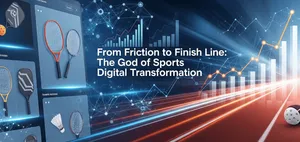
From Friction to Finish Line: The God of Sports Digital Transformation
6 mins : 17 Sept 2025
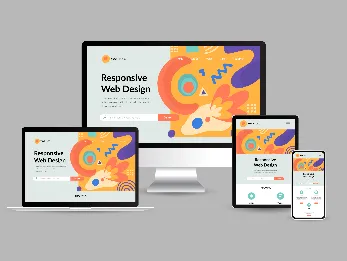
The Future Of Responsive Web Design: Emerging Trends, Innovations And Predictions In 2024
7 mins : 26 Apr 2024
Other Articles

Responsive Web Design: Understanding The Basics For Seamless User Experiences
7 mins : 29 Apr 2024
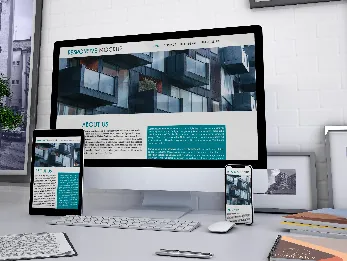
Everything You Should Know About The Ideal Screen Size For Responsive Design
6 mins : 26 Apr 2024
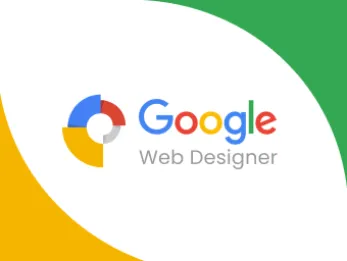
Enhance Your Web Design Creativity with Google Web Designer
4 mins : 17 Nov 2023

